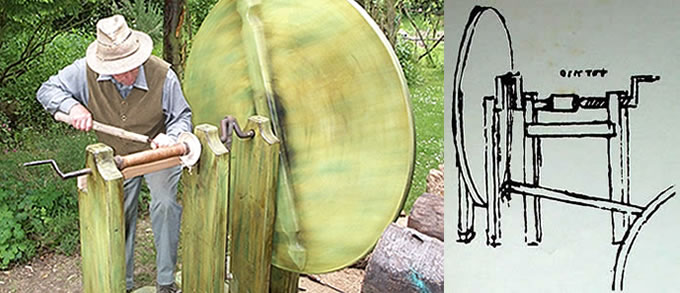i have an old book outlining the generation of parts for a lathe, as done way back when.
the spindle was forged as would be expected,, and done so to a pretty high degree of accuracy to start with,,, looked to be well under 1/16"
next it was driven between centers on a heavily built wood lathe with a long hand held tool, that rested under the operators armpit,, where he carefully turned it true,, bit at a time, checking frequently.
then filed a bit, sanded a bit,,, and then installed in a headstock with babbet brgs.
forward to the lead screw
the author showed woodcuts, of a lead screw built out of a piece of hardwood, with wire tightly wrapped around it, to form round threads,, this was used to generate a fairly accurate lead screw.
the authors contension was, generate 100 lead screws, sort out and test,,, and perhaps you get one or two very good ones, which you install in the machine to generate more, test further and take the best to generate again,,, sooner or later you get a pretty accurate screw.
would be interesting to document the process today, from start to finish ,, using all the old methods
bob g




